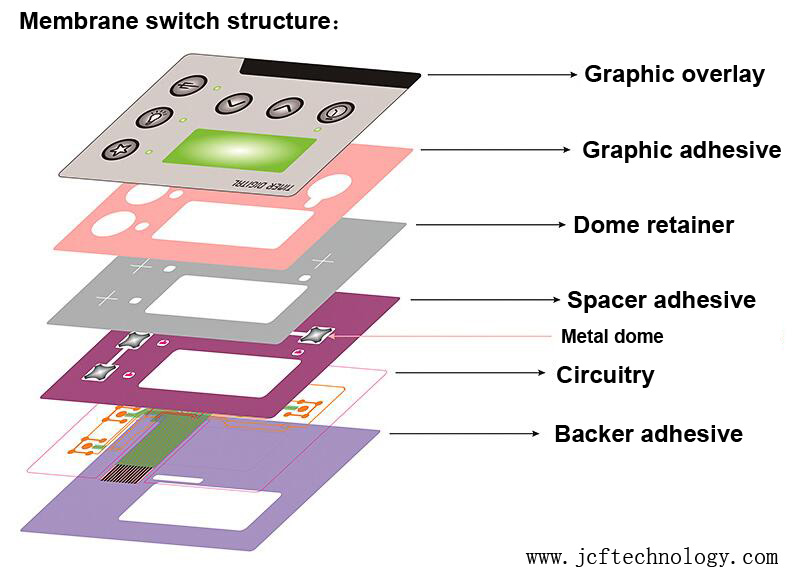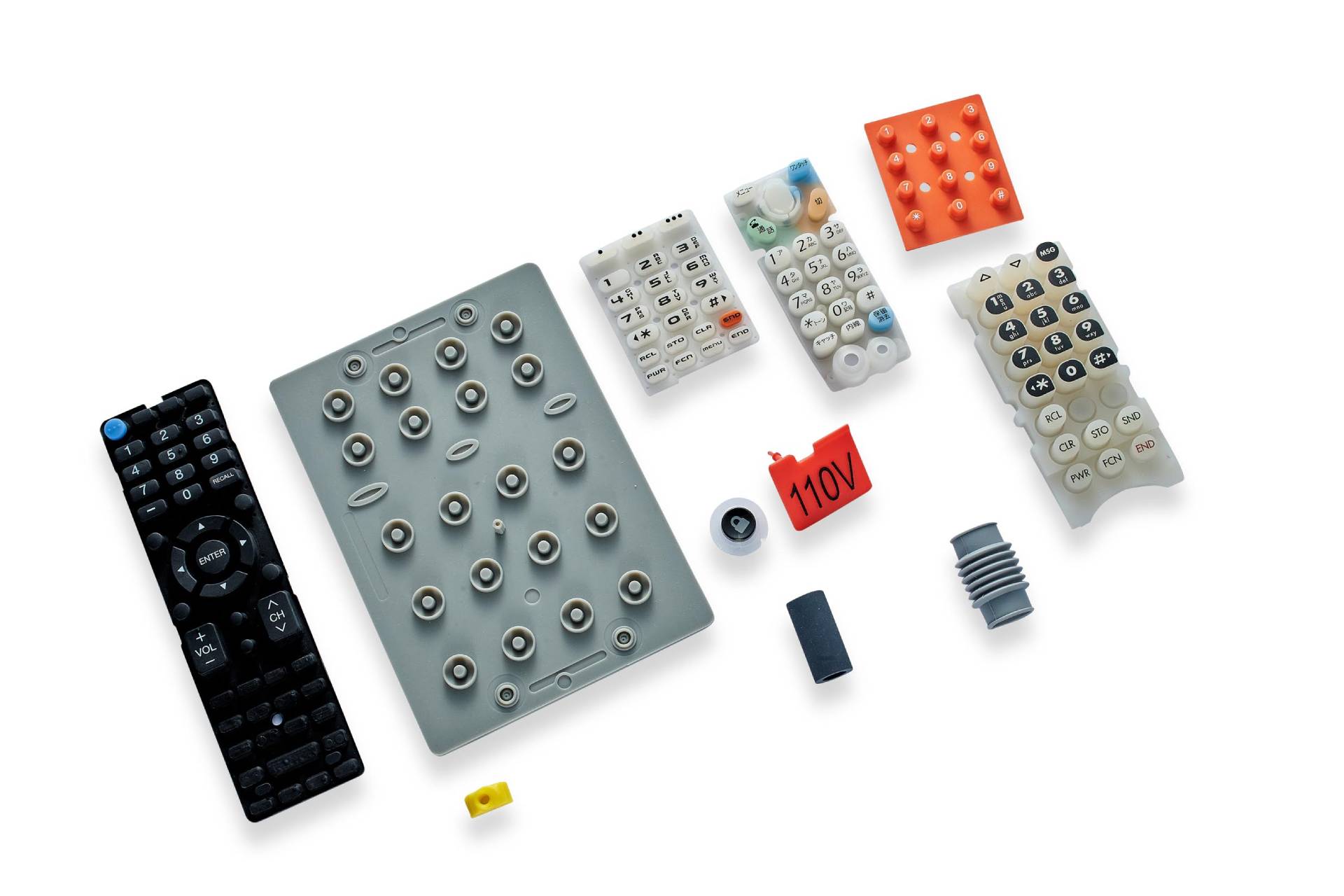Exploring the Manufacturing Process of Membrane Switch for Numerous Industries
The production process of Membrane switches is a complicated venture that requires precision and focus to information. From choosing suitable materials to carrying out rigorous quality assurance measures, each step plays an important function in guaranteeing capability. Various industries, including medical and auto, count on these parts for their special applications. Understanding the intricacies of this process exposes considerable insights right into how these buttons are generated and their impact throughout varied industries.
Understanding Membrane Changes: An Introduction

Trick Materials Made Use Of in Membrane Switch Production
In Membrane button production, the selection of key products substantially affects functionality and resilience. Conductive products, adhesives, and coatings play vital functions, while substratum option influences total efficiency and reliability. Understanding these components is crucial for maximizing the layout and manufacturing of Membrane switches.
Conductive Products Overview
Conductive materials play a crucial role in the functionality of Membrane buttons, guaranteeing reputable electrical connections within the tool. Typically utilized products consist of silver, copper, and carbon-based inks, each offering unique benefits. Silver is favored for its high conductivity and resilience, making it excellent for applications requiring robust performance. Copper, while slightly less conductive than silver, is a cost-efficient alternative usually used in printed circuits. Carbon-based inks offer a functional choice, suitable for applications where versatility and reduced expenses are focused on, although they have reduced conductivity contrasted to steel choices. The choice of conductive materials straight affects the overall integrity, life expectancy, and efficiency of the Membrane button, making it an important factor to consider in the production procedure.
Adhesives and Coatings
Adhesives and finishes are important components in the manufacturing of Membrane switches, providing important bonding and protective residential properties. These materials ensure that various layers of the switch, consisting of graphic overlays and circuitry, adhere safely to one another, boosting longevity and capability. Frequently utilized adhesives include pressure-sensitive adhesives (PSAs) and epoxy-based formulations, which provide strong attachment and durability. Coatings, such as polyurethane or acrylic, serve to shield against ecological variables, consisting of moisture, abrasion, and chemicals. Additionally, layers can boost responsive feedback and visual appeal, adding to the overall customer experience. The choice of proper adhesives and layers is essential for maximizing efficiency and durability in varied applications throughout different industries, making sure that Membrane switches over satisfy particular functional needs.
Substratum Choice Elements
Substratum choice plays an important function in the production of Membrane switches, as it significantly affects their general efficiency and resilience. Trick materials such as polyester, polycarbonate, and adaptable printed motherboard (FPCBs) are commonly utilized for their distinctive buildings. Polyester is preferred for its cost-effectiveness and resistance to abrasion, making it ideal for applications with high wear. Polycarbonate offers superior quality and effect resistance, perfect for atmospheres calling for high exposure. FPCBs give enhanced versatility and are typically utilized in intricate styles. The choice of substrate also influences factors like thermal stability, chemical resistance, and ease of printing. Eventually, selecting the ideal substrate is essential for making sure the capability and longevity of Membrane changes across numerous industries.
The Design Refine of Membrane Switches Over
The style process of Membrane switches is a vital phase that considerably affects the performance and appearances of the last item - membrane switch manufacturer. It starts with defining the certain requirements of the application, consisting of dimensions, button layout, and responsive comments preferences. Designers should take into consideration user interaction, guaranteeing that the switch is intuitive and accessible.Next, products are chosen based on resilience, versatility, and environmental resistance. The integration of graphics and branding aspects is also necessary, as it boosts visual allure and interaction. Prototyping enables repetitive testing, allowing adjustments based upon customer comments and efficiency evaluations.Additionally, the style needs to represent the electrical parts, such as connectors and circuits, ensuring reliability and visit convenience of use. Inevitably, an effective style harmonizes capability, appearances, and user experience, paving the means for reliable manufacturing and resilient performance in numerous markets
Printing Techniques for Membrane Switches
The printing techniques made use of in Membrane switch production play an essential function in determining the end product's quality and performance. Display printing supplies benefits such as sturdiness and vibrant shade application, while electronic printing advancements supply versatility and precision in design. Comprehending these techniques can substantially impact the total efficiency of Membrane buttons in numerous applications.
Display Printing Advantages
Countless benefits make screen printing a favored technique for producing Membrane switches. This method permits high-quality, comprehensive styles and lively colors, which are necessary for individual interface applications. Screen printing is specifically reliable for applying thick ink layers, enhancing resilience and responsive responses. Furthermore, it uses excellent bond to various substratums, making certain longevity popular environments. The procedure is economical for huge manufacturing runs, as it reduces arrangement time and waste. Moreover, display printing supports a wide variety of inks, including specialty and UV-curable choices, allowing flexibility in style. Its ability to create constant results across several systems makes it a trustworthy choice for manufacturers going for top quality and effectiveness in Membrane switch production.
Digital Printing Innovations

Advancements in digital printing modern technology are changing the production of Membrane switches, providing suppliers ingenious services that enhance design versatility and performance. Digital printing allows for intricate layouts and high-resolution graphics, making it possible for personalized branding and capability without the restrictions of standard techniques. This method minimizes configuration times and expenses, assisting in much shorter production runs and very little waste, making it perfect for companies with varying needs. Furthermore, developments in ink solutions give much better toughness and attachment, guaranteeing longevity in numerous atmospheres. As industries progressively seek complicated and individualized layouts, digital printing stands apart as a necessary method, establishing a new requirement in Membrane button production. The integration of these advancements placements manufacturers to meet advancing market requires effectively.
Setting up and Layering of Membrane Switch Parts
Cautious setting up and layering of Membrane switch elements are vital to ensuring performance and resilience. This process begins with the specific positioning of different layers, including the graphic overlay, glue, circuit layer, and support product. Each component has to be carefully placed to maintain electrical stability and user interface responsiveness.During assembly, conductive traces are put on the circuit layer, typically made from materials like polyester or polycarbonate. This layer is important, as it beams when pressure is used. The adhesive utilized for bonding these layers is also selected for its capacity to sustain environmental anxieties while keeping a safe and secure bond.Heat and pressure are frequently applied during the assembly process to identify that the layers stick appropriately without endangering the capability of the button. Lastly, interest is offered to the side securing to shield against dampness and contaminants, protecting the long life of the Membrane button in various commercial applications.
Quality Assurance Procedures in Membrane Switch Manufacturing
Quality control steps play a vital role in ensuring the reliability and efficiency of Membrane switches following the setting up and layering of their elements. In the production procedure, a number of key evaluations are carried out to promote quality requirements. These include visual examinations for issues in printing and sticky application, as well as useful tests to confirm the responsiveness of each switch.Additionally, environmental testing is executed to image source evaluate the switches' sturdiness against temperature level fluctuations and moisture direct exposure. Producers often carry out statistical process control (copyright) techniques to check production consistency, making it possible for early discovery of anomalies.Furthermore, traceability systems are developed to track elements and materials, ensuring responsibility and helping with remembers if required. Calibration of devices and adherence to sector standards are also essential to preserving product integrity. Jointly, these high quality control measures protect the efficiency of Membrane changes throughout various applications, inevitably enhancing client satisfaction.
Applications of Membrane Changes Throughout Different Industries
Membrane buttons are utilized throughout a varied variety of sectors, showcasing their adaptability and flexibility. In the clinical sector, they offer dependable and water resistant interfaces for tools such link as analysis devices and infusion pumps, making sure hygiene and convenience of usage. The auto market employs Membrane switches for dashboard controls, enabling smooth interaction in between the vehicle driver and lorry systems.In customer electronics, these switches are discovered in devices and portable gadgets, using a smooth, contemporary visual while enhancing capability. Industrial applications also utilize Membrane changes for machinery control board, where durability and resistance to harsh conditions are essential.Furthermore, the aerospace and defense industries use Membrane switches for cabin instrumentation and interaction systems, prioritizing reliability and efficiency under severe problems. In general, Membrane buttons play a vital duty in boosting the customer experience and operational effectiveness across numerous domains.
Regularly Asked Questions
For how long Does It Require To Produce a Membrane Layer Switch?
The manufacturing time for a membrane layer button normally ranges from a couple of days to numerous weeks - membrane switch manufacturer. Aspects influencing this duration consist of style complexity, material availability, and production quantity, all affecting the total timeline markedly
What Is the Typical Life-span of a Membrane Layer Switch?
The common life-span of a membrane layer switch generally ranges from 1 to 5 million actuations, depending on factors such as worldly quality, ecological problems, and use regularity, considerably affecting toughness and total performance.
Can Membrane Changes Be Custom-made for Details Applications?
Membrane buttons can indeed be customized for certain applications. Their design versatility enables changes in dimension, form, colors, and graphics, making sure compatibility with distinct demands throughout different sectors and enhancing capability and individual experience.

Are Membrane Switches Eco-friendly?
The environmental influence of Membrane changes varies. Some products used might not be green, while developments in producing procedures are progressively concentrating on sustainability, aiming to lower waste and advertise recyclable components in their production.
What Are the Typical Failure Modes of Membrane Buttons?
Typical failing settings of Membrane buttons consist of delamination, adhesive failing, damage from usage, wetness ingress, and electrical failures. These problems can greatly influence functionality, efficiency, and life expectancy in numerous applications throughout different industries. Membrane buttons can be customized to fit particular style demands, such as form, capability, and dimension, making them very adaptable.The building and construction commonly entails numerous layers, consisting of a visuals overlay, glue, and a circuit layer, which work with each other to create a seamless individual experience. In Membrane button production, the choice of key products greatly affects performance and durability. The auto industry employs Membrane switches for dashboard controls, allowing seamless communication between the vehicle driver and car systems.In consumer electronics, these buttons are discovered in home appliances and handheld gadgets, providing a smooth, contemporary aesthetic while boosting performance. Industrial applications also leverage Membrane switches for equipment control panels, where longevity and resistance to extreme conditions are essential.Furthermore, the aerospace and protection fields make use of Membrane switches for cabin instrumentation and interaction systems, focusing on reliability and efficiency under extreme conditions. Membrane buttons can indeed be tailored for specific applications.